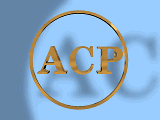
|
American Catholic Press
16565 S. State Street, South Holland, Illinois 60473
|
|||||||||||||||||||||
|
by Archbishop Rembert G. Weakland, O.S.B
Renewal in the Local Church I have been the bishop of a local Church only since 1977. During the 10 years of liturgical implementation prior to that date, I was not living in the United States but in Rome, or was spending my time traveling around the world. Having come from a Benedictine monastic tradition, I knew of some of the abuses people talked about but I had not experienced them firsthand. My first years as a bishop were spent trying, slowly and patiently, to bring some order into liturgical renewal in the local Church. I can honestly and truthfully say that the aberrations that arose in the late 1960's from excessive zeal and exuberance had begun to run their course and to disappear by the early 1980's. Without returning to the kind of cold and uninformed "rubricism" that some wanted, I still felt that the Church in the United States at that time was on the road to settling down. The essentials of good liturgy were being emphasized and the needed sense of the sacred was being reestablished. I had hoped that such a trend could be continued so that, by the end of the 1980's, we would be able to experience the effects of a true renewal. I credit most of this change for the better to the large number of trained liturgists who were graduating from such schools as Notre Dame, the Catholic University of America and St. Anselmo in Rome, and who were being hired by diocesan liturgy offices.
I must confess again from the trenches that this decision was perceived by those small but vocal groups that had never accepted Vatican Council II, and especially its liturgical renewal, as a signal that, with enough noise and criticism, the council could be reversed, or at least re-interpreted. The motu proprio of 1988 establishing the Ecclesia Dei office in the Curia and the admonition that a wider and more liberal use of the indult of 1984 be granted by local bishops reinforced this perception. It was never clear whether we were now to have two Latin rites or whether this permission for the Tridentine usage was to be only temporary. Groups that accepted it have strongly voiced the opinion that both rites stand now on an equal plane.
|
